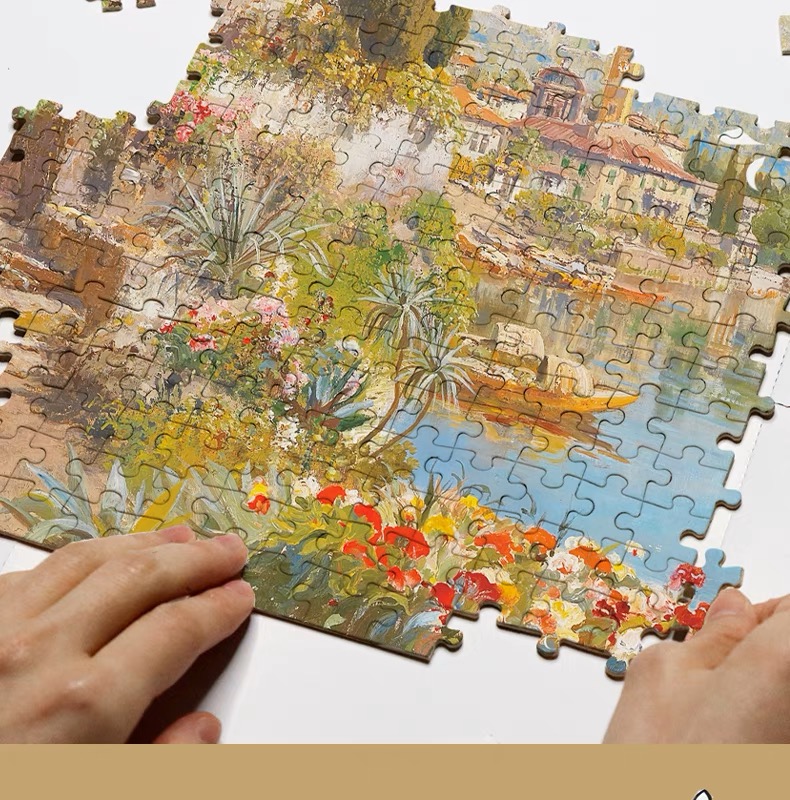What are the tips for jigsaw puzzles?
2025-07-29
The joy of a jigsaw puzzle isn't just about the final moment; it's also about the process of slowly coming together, piece by piece. To achieve smoother puzzles, especially those with over 500 pieces, mastering advanced techniques and improving efficiency through detail will make the experience even more immersive.

Space planning is fundamental to jigsaw puzzles. Choose a flat surface 2-3 times the size of the jigsaw puzzle and pair it with a white puzzle mat. This increases contrast by 30% and makes it easier to see the details. Sort the pieces into three layers: edge, color, and pattern. Place edge pieces separately, and use trays to separate pieces with similar colors. This reduces searching time and increases efficiency by 40% compared to random puzzles.
Puzzling in stages creates a structured approach. Start by assembling the outer frame. The four corner pieces account for approximately 8% of the total edge. The right-angle features allow for quick positioning. Once the outer frame is completed, it can be secured to cardboard to prevent shifting. Next, work on the main pattern area, which accounts for 30%, such as portraits and architectural features. Starting with a highly recognizable pattern, spread outward. After completing each 10×10 area, flatten it with a heavy object to prevent warping.
There are tricks to handling special patterns. For gradient areas, use the "adjacent piece color difference comparison method." Place 3-5 similarly colored pieces side by side and sort them based on subtle tonal differences. This method achieves an 85% matching success rate. For repeating pattern areas (such as brick walls and grids), focus on the curvature of the edge. Pieces with the same pattern typically vary within 0.3mm, making it easier to distinguish with a fingertip.
Tools provide the icing on the cake. Using a graduated jigsaw puzzle board allows you to precisely measure the size of any gaps and narrow down the target puzzle piece. Magnetic puzzle boards are ideal for mobile use, with pieces holding 60% more firmly than standard jigsaw puzzle mats, allowing you to assemble them on the go. For extra-large puzzles with over 2,000 pieces, it's recommended to divide the puzzle into 4×4 sections, marking each section after completion. This will ensure more precise positioning when assembling the final piece.
Mastering these techniques can reduce jigsaw puzzle completion time by 30%, reduce rework due to incorrect pieces, and make the puzzle process much easier. This makes it easy for beginners to get started quickly, while also helping experienced players master challenging jigsaw puzzles.




